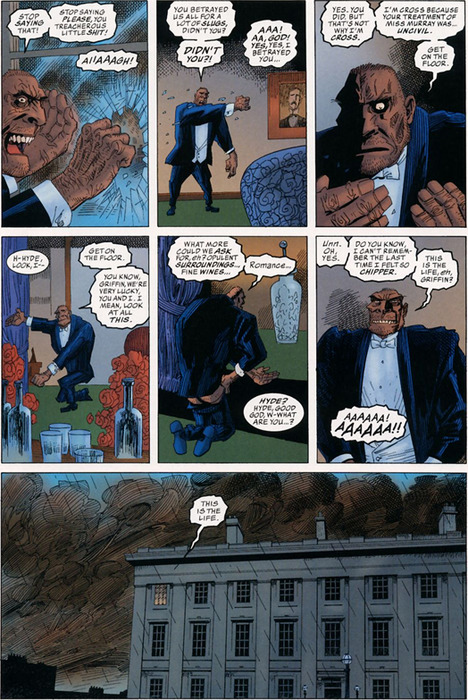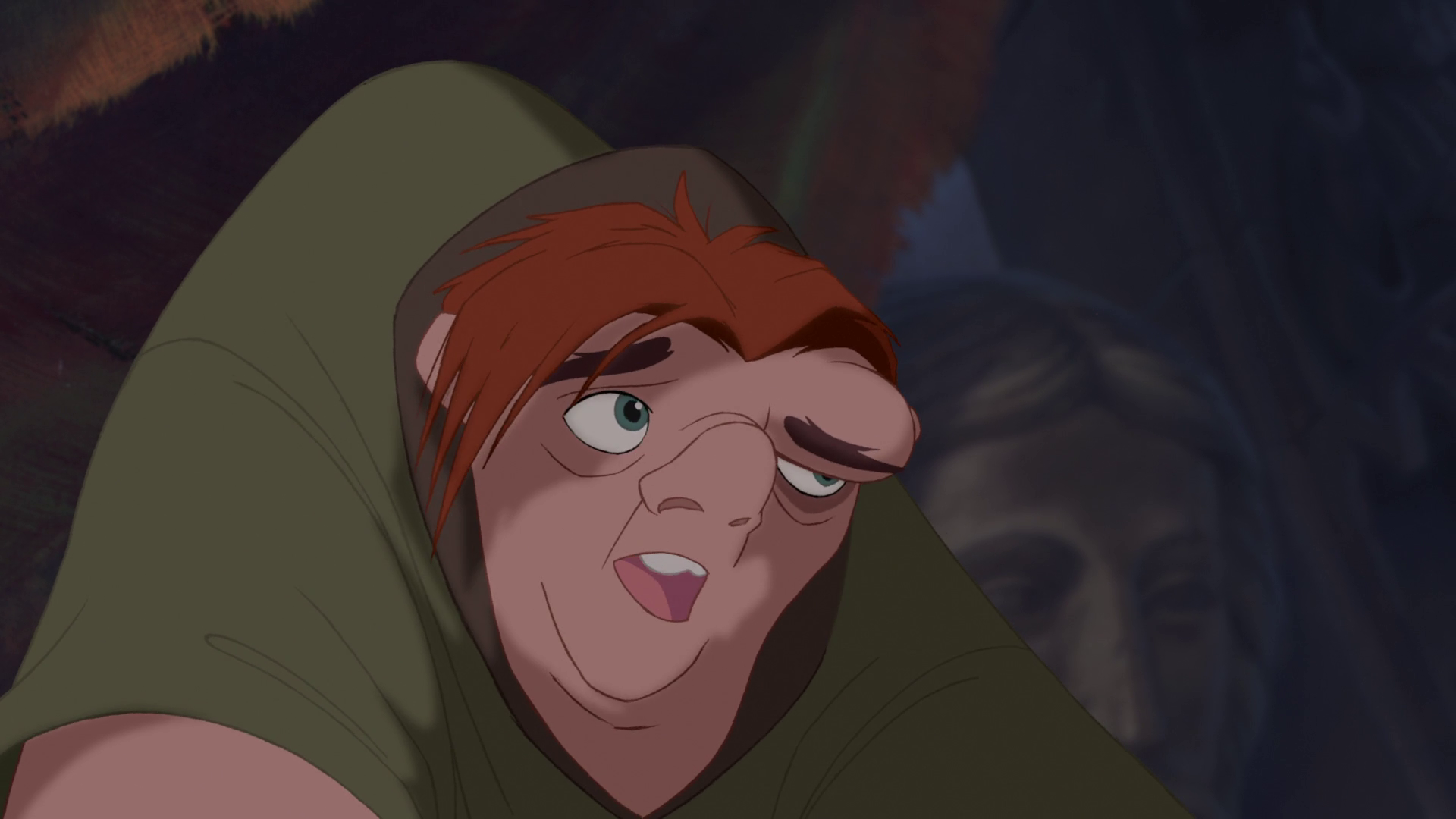All these monsters have a distinctive visual aesthetic, something about the way they look that is striking and captivating. Dracula's famous pointed cape (and boob hair) or Frankenstein's neck bolts and stiff gait. The Wolfman's wolfiness or the rotting flesh of zombies, not to mention the dead vacant eyes of Bella Swan. Each of these iconic monsters have a striking visual image to stick in the imagination of the viewer.
 |
| It's like she's trying to emote to me, I just know it. |
Which is probably why the topic of my post this week has probably suffered in terms of popularity or cultural resonance as a horror movie monster. Mostly because you can't see him at all. Being invisible and whatnot.
I'm speaking, of course, of the Invisible Man, created by science fiction icon, H.G. Wells (you know, the guy who basically invented the time travel story and alien invasion narrative), in his novella, The Invisible Man. I've spoken (well referenced) the Invisible Man before in my post about rape in pop culture.
That was because the Invisible Man in Alan Moore's League of Extraordinary Gentlemen uses his invisibility to rape young women/girls in the "Correctional Academy for Wayward Gentlewomen" resulting in 'immaculate conceptions', or rather, children conceive in immoral violation.
 |
| Although I left out the part how he is raped in turn by Mr Hyde. |
The character of the Invisible Man as a concept basically explores what is now a pretty common assumption, that if someone was invisible they would get up to crazy shit, yo. Therefore, it's no suprise that Alan Moore being Alan Moore would make the character utterly reprehensible and a psychopath.
Essentially the thought process is that the ability to be invisible and get away with things without getting caught will inevitably cause someone to become evil and drunk with power, specifically the power to get away with things. That does kinda ignore that Invisible Woman from the Fantastic Four is a superhero though.
 |
| To be fair, even the other members of the Fantastic Four forgot about Invisible Woman before she developed force field powers and become badass. |
However, I'm not going to focus on H.G. Wells' novella but rather the 1933 movie adaptation by James Whale, who also directed Frankenstein. Unlike his adaptation of Mary Shelley's Frankenstein, which took a number of liberties with the source material, The Invisible Man is a relatively faithful adaptation with some minor changes.
And by minor changes, I mean changes which if they were made today would probably result in a number or angry tweets and blog posts about how it was so much better in the book. But before I get into that, I'd like to go back to the changes they made for the movie version of Frankenstein I mentioned.
 |
| For example, this shot of the monster reciting Shakespeare. |
I don't know about back in the day but today we have a lot of book snobs who criticise any and all changes made in the transition from novel to film. This is despite the fact that some of the most iconic and memorable things we associated with a cultural object can come from that film adaptation.
Case in point, everyone knows Igor, right? Victor Frankenstein's hunchback servant with the slight speech impediment. Well, he is wholly a cinematic creation. There is no Victor in the original novel. Nor is there in James Whale's film for that matter. There's a hunchback alright but his name is Fritz, not Igor.
The hunchback Igor would only appear in a much later sequel but somehow the name stuck in the popular consciousness and was retroactively attributed to the first movie by people not paying attention. He's probably the most popular hunchback in pop culture and he wasn't even in the book.
 |
| "Hey... I'm the most popular hunchback in pop culture." |
Now with The Invisible Man, most of the changes are cosmetic changes, essentially giving the character some back story, a support base (girlfriend and mentor where in the book he was basically on his own), and a first name.
Much of the plot remains the same aside from minor details, like having a colour-removing drug in the invisibility process causes Griffins (the Invisible Man) to go mad where in the novel he's just bad because he's bad.
On a completely different note, what is rather refreshing watching this movie is that in an age where we are quite figuratively drowning in origin stories, the plot just starts with him already invisible and bitchy.
We are giving the details of how he become invisible in the dialogue but it's so nice not have to go through the whole origin narrative because I think we're all getting origin fatigue at this point.
 |
| Remember when people were upset that this was an origin story? Yeeaaah... the new Marvel reboot will be an origin story. The third once within 15 years or so. |
But what is really interesting about the Invisible Man, for me at least, is just how unrelentingly murderous he is. Especially in regards to the other horror movies made by Universal Pictures at the time. In the Frankenstein movie, the monster only kills one little girl (by accident) and while Dracula definitely is menacing and presumably kills a crew of sailors, his murders are off screen.
However, the Invisible Man is utterly ruthless. He strangles a policeman to death just because he can in the first half of the movie. But it is in the second half of the movie, particularly in the final act when he goes on a killing spree that he truly shows what a monster he is.
He calmly declare that he will begin a reign of terror with "a few murders here and there" but when he goes on the lamb, he goes on a murderous rampage that Dracula could only dream of. He causes the derailment of a train killing hundreds and forces volunteers looking for him off a cliff without a care in the world. A true psychopath.
 |
| I know it's hard to believe. He looks like such a reasonable fellow. |
Frankenstein is mindless aberration whose mere existence is terrifying but his intentions aren't actually evil. And while Dracula's actions are creepily menacing, he lacks the ambition to really use his dark powers to their full potential, mainly terrorising a single family for some reason.
The Invisible Man however fully intends to use his invisibility to gain dominion over others and commit heinous acts of murder. His ambitions probably exceed the opportunities given to him by being invisible but nevertheless makes the most of it to become one of, if not the, most murderous monsters of his time.
 |
| Definitely among the most fabulous and well-dressed. |
It's the utter glee and exuberance with which he carries out his evil that truly makes him a psychopath. He deals out pithy one liners and makes grand speeches about the world succumbing to his power, every word tinged with mad-eyed gleam.
It's a fantastic performance by Claude Rains, who endues Griffins with real force and malice that makes the Invisible Man even more terrifying since you can tell how unhinged he is due to the power granted to him.
Oh, to sign off, just a thought. Just remember that whenever he's out strangling people to death with his bare hands or causing the death of hundreds due to public transport, he's completely naked.
His balls could be inches from your face and you would never know.
You would never know.
References:
The Invisible Man Wikipedia page
The Invisible Man (film) Wikipedia page
Hawley Griffin League of Extraordinary Gentlemen Wiki page
Frankenstein Wikipedia page
No comments:
Post a Comment